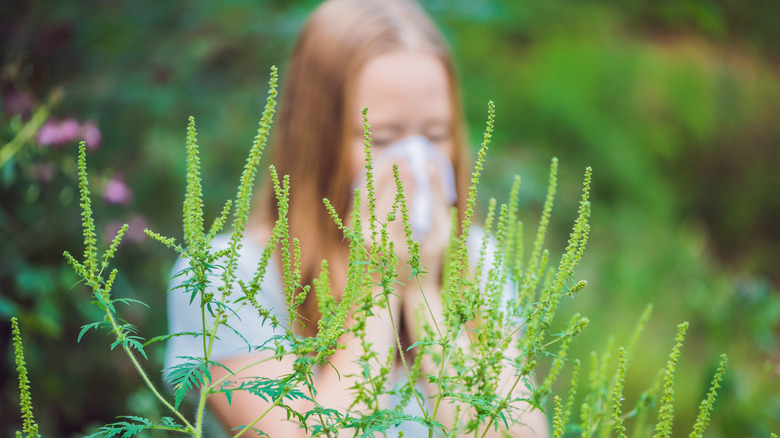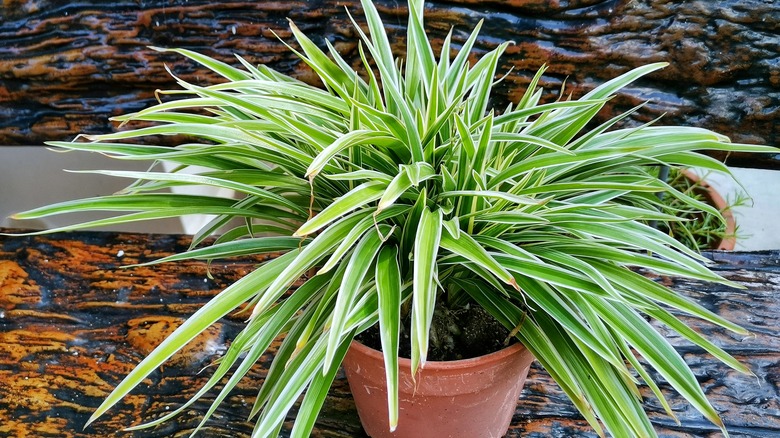Why Chamomile Might Not Be The Ideal House Plant
Though many reach for a cup of chamomile tea at night, this popular herbal remedy is also found in many gardens and homes. Chamomile is a popular houseplant due to its attractive foliage and delicate white flowers. However, you may want to rethink having a chamomile plant indoors as it can trigger allergies, especially for those sensitive to ragweed.
Chamomile plants are members of the daisy family and are native to Europe and Asia. It has a long history of use as a calming tea and a natural remedy for insomnia, anxiety, and digestive issues. While chamomile is often considered beneficial, it is essential to know its potential allergens.
For those who suffer from ragweed allergies, exposure to chamomile pollen can cause a range of symptoms, from mild discomfort to severe reactions. The plant can also cause skin irritation or contact dermatitis in sensitive individuals (via "Allergy"). As a result, it is a good idea to stop and consider the possible effects of bringing chamomile into your home if you have allergies.
The connection between chamomile and ragweed allergies
The relationship between chamomile and ragweed allergies lies in their shared family, the Asteraceae family. Ragweed is a notorious allergy trigger, causing symptoms such as sneezing, itchy eyes, and a runny nose (per WebMD). Chamomile, a member of the same family, contains allergens that can cause similar reactions in people who are allergic to ragweed and daisies, marigolds, and chrysanthemums (via the National Center for Complementary and Integrative Health), some of the worst flowers for allergies.
The allergens present in chamomile are released into the air as the plant blooms and can be inhaled. This can lead to a range of symptoms, including sneezing, congestion, and itchy, watery eyes. In severe cases, exposure to chamomile pollen can even trigger anaphylaxis, a life-threatening allergic reaction that requires immediate medical attention.
Furthermore, chamomile has also been known to cause skin irritation and contact dermatitis in some people. This is due to certain compounds in the plant's oils, which can cause an allergic reaction when they come into contact with the skin. This can lead to symptoms such as redness, itching, and blistering, and in severe cases, may require medical attention.
Indoor plants that are better choices for people with allergies
Fortunately, many indoor plants are beautiful, low-maintenance, and less likely to trigger allergies than chamomile. One of these allergy-friendly plants is the spider plant. Known for its long, slender leaves and dangling spiderettes, it is hypoallergenic and easy to care for. It can even help purify the air in your home. Similarly, snake plants have tall, sturdy leaves and striking patterns and are an excellent choice for those with allergies as they release oxygen and filter toxins from the air.
Peace lilies are another popular indoor plant, and they not only look gorgeous with their white blooms but are known to help purify the air while being hypoallergenic. Choosing these plants instead of chamomile can create a healthy and attractive indoor environment while minimizing the risk of aggravating allergies. It's important to consider the potential allergens of any plant before bringing it into your home and always to prioritize your health and well-being.


